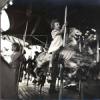

1869-The First Annual Fair and Cattle Show of the Danbury Farmers and Manufacturers Society held the fair in a rough one story building and a small tent borrowed from the Barnum and Bailey Circus.
1872-All people may exhibit and compete for Premiums.
1873-The best Ruta Baga Turnips won $3.00; Best silk suit won $2.00, and the Best singing canary won $1.00.
1875-It was decided to erect a new exhibition building.
1878-Electricity came to the fair for the exhibitors of machinery.
1879-The New York and New England railroad brought people to the fair.
1880-Horse trotting races came to the fair. The prizes totaled $6,000.
1881-Children competed for the most attractive cage of pet animals and the best exhibition of butterflies.
1883-Butter contests and paintings on Banjos brought a prize of $1.00.
1885-Farmers brought 45 varieties of apples for competition, 31 kinds of pears, 56 kinds of grapes, and 23 kinds of cake.
1887-You could attend the fair for 25 cents.
1888-The sale of strong liquor at the fair was prohibited.
1889-Many new attractions were added: restaurants, shooting galleries, museums, performing dogs, ring throwing, doll-targets, educated parrots, fortune tellers, muscle-testers, concerts, organs, singers, dancers, knife-swallowers, fire-eaters, magicians, merry-go-rounds, photograph galleries, and a dancing pavilion.
1890-Daring Donald's hot air balloon failed.
1891-Two detectives watched the fair to catch pickpockets.
1893-The schools are closed and the factories are shut down so they can all go to the fair.
1895-The trolley track was laid to the fairgrounds. At least 1000 people worked at the fair.
1896-The first horseless carriage to be seen in Danbury was shown at the fair.
1902-KiKo, the Philippine wild man was a feature of the fair.
1904-Automobile race and a motorcycle race was added to the fair.
1907-A milking machine was on show.
1908-The fairgrounds were electrified. Captain Baldwin's huge airship circled above the heads of the audience.
1909-The famous car, the Fiat Cyclone traveled at a rate of 70 miles an hour.
1911-Hammond made a thrilling airplane flight in dangerous winds.
1914-The last horse carriage show.
1916-The main building of the fair was destroyed by fire.
1917-Suffragettes marched at the fair. World War I equipment attracted attention.
1918-The flu epidemic closed the Fair.
1922-A new grandstand was built of steel and cement.
1929-A loudspeaker was added. The Great Walno was shot from a howitzer cannon.
1932-The fair was opened for the first time on a Sunday.
1938-Last half-mile car race was won by Ted Harris.
1940-First full season of midget car racing.
1941-Fire destroys the Big Top.
1946-First fair under John W. Leahy.
1951-Modified stock car racing came to the fair and continued until the end of the fair in 1981.
1954-The telephone answering machine was introduced. Corporal Edward Davey blew 75 smoke rings in a contest judged by actor Ernie Kovacs.
1964-Last year of midget car racing.
1968-Cheetah the Chimp smoked a cigarette while eating several hot dogs and drinking soda from a bottle held between his feet.
1974-Charles Ives Centennial Concert conducted by Leonard Bernstein was held on the fairgrounds in July.
1981-The Last Danbury Fair
1982-Six-day auction of all the 12,000 items at the fair. The fairgrounds were sold to Wilmorite for $24 million dollars.
The Danbury fair still had agricultural exhibits of crops and farm animals but there was much more. The Danbury fair was like a circus, a carnival, an amusement park, and much more all rolled into one. The fair was a kaleidoscope of bright colors from lights and attractions and sounds from music and laughter all making for quality entertainment.
The Danbury Fair had a Big Top packed with spectators amazed by the acts of the traipse artists, elephants, and a human cannon. The midway had many, many booths of food of every type and taste. Challenging games of skills that could win you fun prizes lined the Midway. The Midway also featured exhilarating rides like a Ferris wheel and carousel.
Clowns, magicians, and performers roamed the fair exciting your senses with their wonderment. Long parades of people and animals began and ended each fair. The Dutch Village was a major attraction; it had many different types of entertainment. Horse races, car races, and boat races were also a feature.
The fair also gave people a chance to look at new and exciting inventions that would soon be available for use in their homes. More people came to visit the fair than the entire population of Danbury. The people of Danbury took great pride in the fair; it was their fair, their gift to the people.